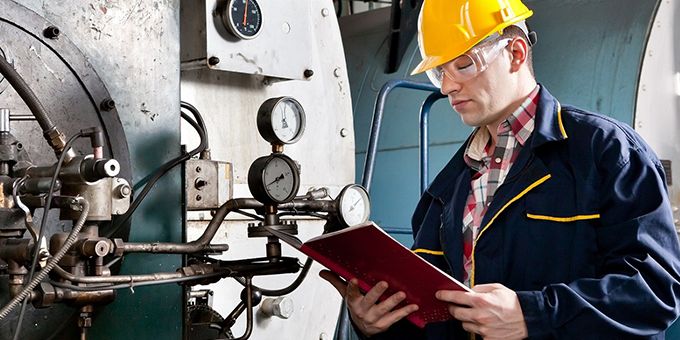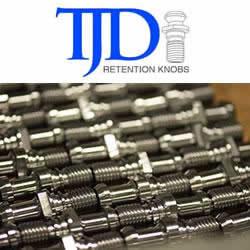Google Trends data suggests that worldwide searches for ‘Industry 4.0’ have continually increased since the term was first coined. What’s more interesting, is that the same data shows the term ‘What is Industry 4.0?’ is the most popular related query. Are you surprised?
 Is Industry 4.0 a Pipedream?
Is Industry 4.0 a Pipedream?

Claudia Jarrett, US Country Manager | EU Automation
Trade media has been awash with articles about Industry 4.0 for several years — but where does the concept originate from? Back in 2011, Dr Henning Kagermann, Dr Wolfgang Wahlster and Dr Wolf-Dieter Lukas introduced Industry 4.0 to visitors at Hannover Messe. At the trade show, they described their vision to invest in smart technologies, to build on Germany’s success in the automotive and mechanical engineering sectors.
Today, discussions about Industry 4.0 have gone far beyond Germany’s political landscape. Despite the global hype about this trend, Industry 4.0 has remained relatively theoretical.
While there’s plenty of media coverage about the potential benefits of Industry 4.0, most day-to-day manufacturers are unsure of what they need to do to be a part of the revolution.
Let’s face it, Industry 4.0 is not a product that manufacturers can purchase off-the-shelf. Instead, it is an idea and vision that, to implement properly, requires planning, cultural change and new technology. So, is Industry 4.0 really just a pipedream?
Implementing Industry 4.0
At the heart of Industry 4.0 is the digitalization of manufacturing facilities. This could refer to the deployment of industrial hardware, investing in new technology or the use of innovative software. Don’t get us wrong, this doesn’t require an entire system overhaul, nor does it require investment in expensive and state-of-the-art technology.
In industry, there is a sense of urgency to innovate, but this can be dangerous. When rushing to digitize, manufacturers risk investing in automation without fully understanding how it will impact their operations. Digitalizing just for the sake of being competitive will not be beneficial to a business. Manufacturers may choose the wrong technology or not change their culture accordingly to use the new system to its full potential.
The Engineering Employers’ Federation (EEF) argues that Industry 4.0 is a journey with three distinct milestones — conception, evolution and revolution. Every company is at a different stage to this journey and should focus on their own business and what’s realistically needed, as opposed to simply investing in the most exciting new technology.
Incremental steps to Industry 4.0
Achieving Industry 4.0 isn’t a one step process. And luckily, a major factory overhaul is not the only path to digitalization. Retrofitting a few key-components can be an easy, quick and cost-effective way to take the first steps in Industry 4.0.
Retrofitting involves adding connectivity to existing machines, so that they can communicate and interact over the Internet and can be remotely monitored and controlled. The simplest way to do this is to add sensors for data acquisition, or invest in technology to measure vibration, temperature, current and power consumption. These parameters indicate how equipment is performing and can communicate this information automatically.
For example, an accelerometer could measure the frequencies at which the rotating elements of a machine vibrates. An increase in vibration amplitude signals a problem in the rotational elements of the machine, such as insufficient lubrication. This information can be communicated to a maintenance engineer trained in vibration analysis, who will be able to identify the issue and schedule the necessary repairs before the machine breaks, causing unexpected and costly downtime.
Sounds simple, doesn’t it? This is the reality of Industry 4.0 in practice.
Removing the mystery
In this example, manufacturers do not need to purchase a new machine with embedded connectivity or overhaul the way they currently manage equipment maintenance. Adding an accelerometer is enough. Realistically, most Industry 4.0 transformations can be achieved in a similarly simple and cost-effective manner.
This also removes problems related to compatibility and obsolescence — common issues for manufacturers investing in brand new technology to work alongside legacy equipment. Obsolescence is the natural consequence of continuous advances in technology and Industry 4.0 exasperates this. It is impossible to eliminate obsolescence completely but taking the retrofitting approach to Industry 4.0 can lessen the potential impact.
Managing obsolescence in Industry 4.0
Consider this as an example. A Human Machine Interface (HMI) has broken down. Unfortunately, it is a discontinued model, so the manufacturer cannot source an exact replacement from the Original Equipment Manufacturer (OEM). Pipedream visions about Industry 4.0 would dictate purchasing a brand-new HMI.
However, this option would mean the HMI is unlikely to be compatible with the rest of the equipment on site, creating more costs and downtime.
Manufacturers might think it is impossible to find obsolete parts, hence they might adopt two strategies: substituting the whole machine with an updated version or, worse, opt for the cheapest substitute products. Neither is a good choice. The best option is to have a partnering agreement with a reliable supplier which specializes in obsolete components, like EU Automation.
As one of the first step of implementing Industry 4.0, manufacturers should make a list of components on site that are already obsolete and rank them by importance. Critical applications, which are essential to operate the entire system, should be prioritized. Using this method, manufacturers won’t be forced to embark on a system overhaul if something breaks down.
Industry 4.0 can be confusing, but manufacturers needn’t believe that achieving Industry 4.0 connectivity is unattainable. The advantages of this concept can be experienced even with small and incremental investments. Combined with a clear obsolescence management plan, implementing Industry 4.0 isn’t such an intimidating process as first anticipated.
The content & opinions in this article are the author’s and do not necessarily represent the views of ManufacturingTomorrow
Comments (0)
This post does not have any comments. Be the first to leave a comment below.
Featured Product

